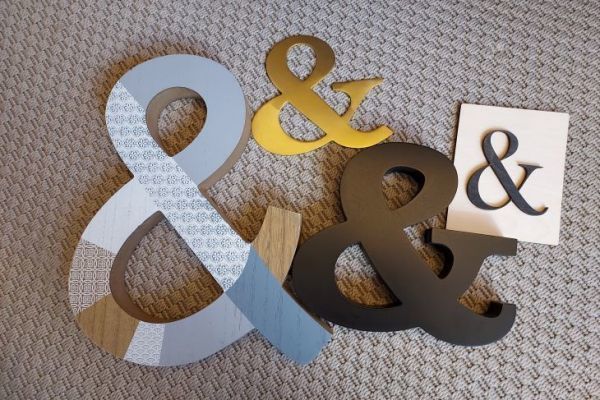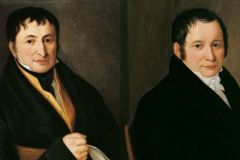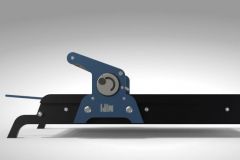But where does this strange character come from, a little bit like an 8 and which is not part of the alphabet? The ampersand also called "and commercial" comes graphically from the fusion of the two letters e and t. The use of a ligature between letters would have been imagined long before the birth of printing by Marcus Tullius Tiro, slave and secretary of Cicero, in the 1st century er century BC. The ampersand, as we call it today, was part of a whole system of abbreviations that made it possible to write faster and save space in manuscripts at a time when writing materials were scarce and expensive.
Crossing the centuries, appearing in works of the 15th century, it is necessary to wait for the 16th century and the creator of French typefaces Claude Garamond for the appearance of the shape of the ampersand that we know: the typeface with the e on the left, the t on the right and a filled then untied curve which connects them.
Even if the ampersand is not conventionally used in literary texts or newspapers, it is an integral part of existing fonts and Latin alphabets and lends itself to all creative fantasies especially in italics. This ligature is above all aesthetic and very calligraphic. This symbol well abused, tarasbiscoté, illegible when it is handwritten finds a rigor and often an elegance, transformed into print.
When the ampersand puts on its "and commercial" jacket, it becomes much more than a ligature of letters. "Its creativity is a timely reminder of the lasting impact of the pen in type design, and it means more than just a bond. It also expresses permanence, especially in business partnerships: Dean & Deluca are together for the long haul, as are Ben & Jerry's, Marks & Spencer or House & Garden and Town & Country magazines. But Simon and Garfunkelâeuros? No wonder they spent their time breaking up. Tom and Jerryâeuros? Of course they hate each other" we read in Sales Characters by Simon Garfield, published by Le Seuil.
Ampersand, a name with a still mysterious origin
Several attempts have been made to explain the name "ampersand".in the 19th century the ampersand was considered as the 27 e and last letter of the alphabet. In the dictionary Le Petit Larousse of 1878, it is written that this sign was pronounced "ète". Children were taught in elementary school to recite the alphabet by adding "ampersand" at the end for the rhyme, which would have given the word ampersand in the long run.
According to another version, the children recited the alphabet and after "z" added the Latin words and, per se, and and' pronounced "ète-per se-ète", which would have been transformed into "et, per lui, ète".
Esperluette could also come from the Occitan "es per lou et" which means "it is for the and".
The dictionary of the French Academy, for its part, indicates a 19th century origin probably derived from the Latin sphaerula (small sphere).
Today the ampersand is also called ampersand, amputee or ampersand, making its etymology even more mysterious.












